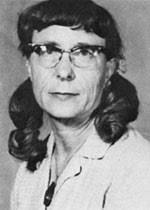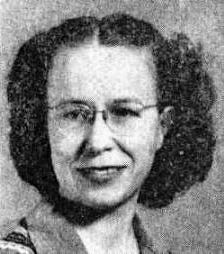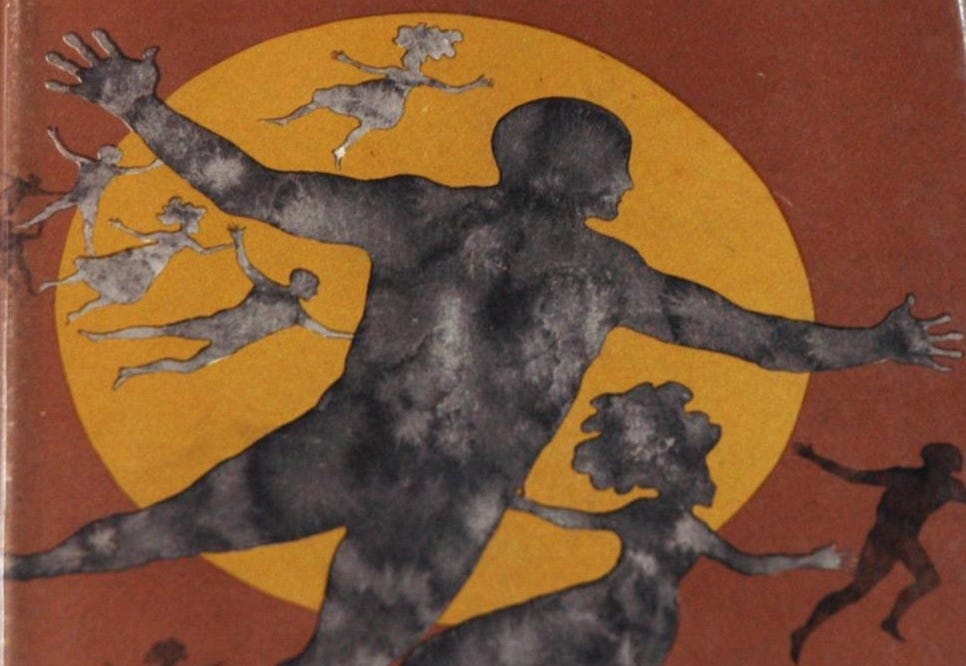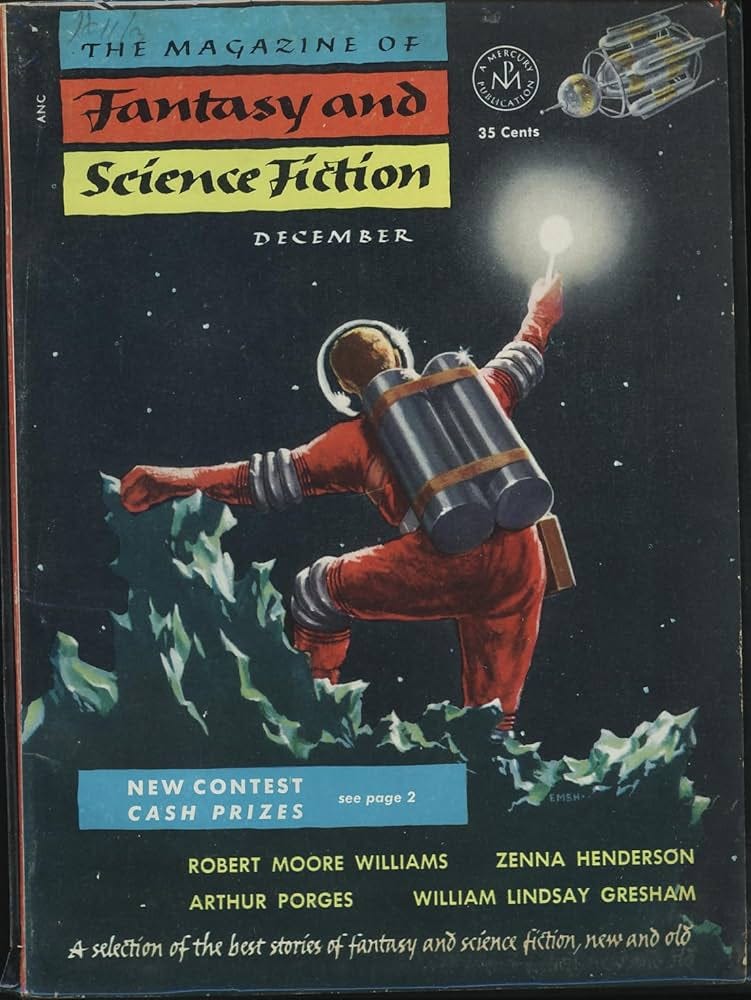Zenna Henderson and her People
I've come across Zenna Henderson by chance - and found myself taken in by the short stories of this school teacher and 1950s sci-fi author.
The sci-fi genre was, for a very long time, dominated by white men. All the more so in the early fifties. And to get passed the gatekeepers and see your sci-fi stories published as a female writer was rare. Zenna Henderson, a life-long elementary school teacher from Arizona, was one of the first women writers to see her stories published in American sci-fi magazines.
I’ve written about one such success story a while back: Leigh Brackett made it as a Hollywood screenwriter in the 1940s already (The Big Sleep!). She wrote crime novels but would always consider herself, first and foremost, a sci-fi writer. Leigh Brackett was born in 1915 … and just two years later Zenna Henderson came along. Unlike that of Brackett, who roamed in Hollywood circles, Zenna’s life would be, from start to finish, entirely earthbound.
Maybe there’s a clue to her writings about aliens right there. Were her stories a form of escapism for her? Well, there’s probably a bit of that in all of us writers, but in her case, it appears that she very much kept her feet on the ground even when writing about “The People,” an alien race stranded on Earth, aliens that could fly and possessed tremendous telepathic and telekinetic abilities.



Born in Tucson, Arizona, she was one of five children of parents of Mormon faith and began reading sci-fi (it was the glorious time of Astounding Stories, Amazing Stories and Weird Tales) at an early age. With her Bachelor’s under her belt, she began teaching - and she would teach mostly in Arizona. A marriage didn’t take and after her divorce in 1951 she went on to add a Master’s to her resume. 1951, the year she got divorced, interestingly was also the year she managed to get her first story published in "The Magazine of Fantasy and Science Fiction”.
“In any age when people pervert goodness, love, and obedience and set up a god small enough to fit their shrunken souls...Anything is evil,...It lies on the other side of the line you draw around what you will accept as good. Some people's lines are awfully narrow.”
I have just read a compendium of short stories, published as a novel. She wrote about fifty short stories - and some of them were collected and ‘touched up’ to work as novels. The novel I have with me is entitled “Pilgrimage: The Book of The People” - it contains several short stories, framed by a minor device that bridges from one story to the next and that explains why these stories are told in the way they’re told. All of everything you’ll read is both well-crafted and insightfully, and gently, told.
“The words are the words of English, but the sense is the sense of confusion.”
“The People” of Henderson’s creation are humanoid aliens that crash-landed on Earth. They have incredible abilities, but choose to live in secluded ways in remote locations that aren’t easily accessible. There they live in peace and harmony. When they need to get to town, they fly their cars to where the roads improve enough to be driven on. Invariably, these aliens are gentle and try to help and do good - while never revealing their otherness.
“She was talking to a something deep in me that never got talked to, that hardly even had words.”
Many of the stories feature, surprise, surprise, a school teacher. But while much of that rural life may feel traditional in the way they live, the gender roles, etc., the stories are rich in surprises, in character and in prose. One story tells of a school teacher assigned to that remote village; another tells of a troubled child with special powers (one parent was an alien) and how a teacher tries to help; another explores the life of a alien group that desperately tries to stamp out all of their special powers in order to stay alive (it appears that, during settler and then mining times, they were hunted down) and how a new teacher tries to bring life back to the community by helping children embrace their gifts.
“They’re happy!” she thought. “In a world like this they’re happy anyway! What do they have as a touchstone?” She studied the group as Dita began, and under the first flow of Dita’s words she thought, “Maybe this is the answer. Maybe this is the touchstone. When any one of them cries out the others hear—and listen. Not just with their ears but with their hearts. No matter who cries out—someone listens—”
In everything you’ll read, you’ll find Zenna Henderson’s life, her insights as a school teacher, her love for children, her fervor for nourishing young souls and for caring communities. I found this book and the discovery of Zenna Henderson illuminating - and so, when I was done, I couldn’t help but grab myself one of those MFSF editions that features a Henderson story - published in 1953, it smells so old-good!
Oh, and here’s one ‘gem’ you might want to give a miss (it’s a bit of a mashup of her stories), but maybe you’re also intrigued, you’ll get a good sense of Henderson’s world-building: the 1972 TV movie “The People” produced by Francis Ford Coppola, starring Kim Darby and featuring non other than James T. Kirk, aka William Shatner.
While Henderson’s stories never found greater silver screen attention, she left her mark nonetheless - various writers consider her an inspiration - one of them Orson Scott Card, who wrote Ender’s Game (a sci-fi story very much about teaching and a wealth of insight into adolescent psychology).
There is some apologist notion of people liking Zenna Henderson’s stories. There are real issues, there are struggles and tragedies, but yes, things will work out in the end. People are kind and, by and large, there’s something entirely wholesome about it all … but isn’t that a wonderful thing? In her stories, Henderson tells of aliens on their own, then of some discovering gifts with only one alien parents … and even of us regular old humans being on the verge of discovering such gifts … now wouldn’t that be something!
One voice across the world wild webs I’ve come across puts it just right: “Everything she ever wrote says one thing. There is wonder in the world; and don’t persecute people for being different. She says it simply and beautifully, without a single false note. Simplicity is not stupidity. Gentleness is not boring or weak. Children and teachers are part of the real world. Teaching and counseling and the kinds of work that require emotional sensitivity are real disciplines. If you can make generations of young people grow up a little more hopeful and humane, if you can give them glimpses of the joy beneath the skin of the world, you are winning.”
So go grab yourself some Zenna Henderson time.
Happy weekend to you.
Cheers,








